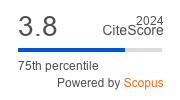Article | Open Access
Multiple Geographies of Commons‐Based Peer Production
| Views: | 807 | | | Downloads: | 801 |
Abstract: This article engages from a geographical perspective with commons‐based peer production (CBPP), an emerging socio‐economic activity based on sharing resources and outputs among individuals who collaborate in a non‐hierarchical manner. CBPP was initially used to describe the intangible production of knowledge and information through online cooperation. More recently, this practice grew to include other sectors of production, like hardware development, manufacturing, or agriculture, and has spread in various geographical settings, connecting Global North and Global South, rural and urban places, and digital and physical collaborations. The combination of intangible and tangible production has been described through the concept of cosmolocalism and the principle of “design global, manufacture local,” and has been analyzed through practices observed in communal spaces, like makerspaces. While CBPP has been discussed as a more sustainable and convivial mode of production in social science literature, the phenomenon remains under‐researched from a geographical perspective. This article aims to contribute to the CBPP literature and current geographical debates by exploring this emerging activity from a geographical lens. By using “multiple geographies” as a methodological tool, we argue that geographical approaches can help CBPP engage more with the materiality of production, as well as identify, problematize, and potentially address power relations on multiple scales. Likewise, the CBPP literature can contribute to geographical literature that is concerned about practices for more liveable worlds.
Keywords: commons‐based peer production; cosmolocalism; local manufacturing; multiple geographies
Published:
© Danai Liodaki, Markus Sattler, Vangelis Papadimitropoulos, Thilo Lang. This is an open access article distributed under the terms of the Creative Commons Attribution 4.0 license (http://creativecommons.org/licenses/by/4.0), which permits any use, distribution, and reproduction of the work without further permission provided the original author(s) and source are credited.


